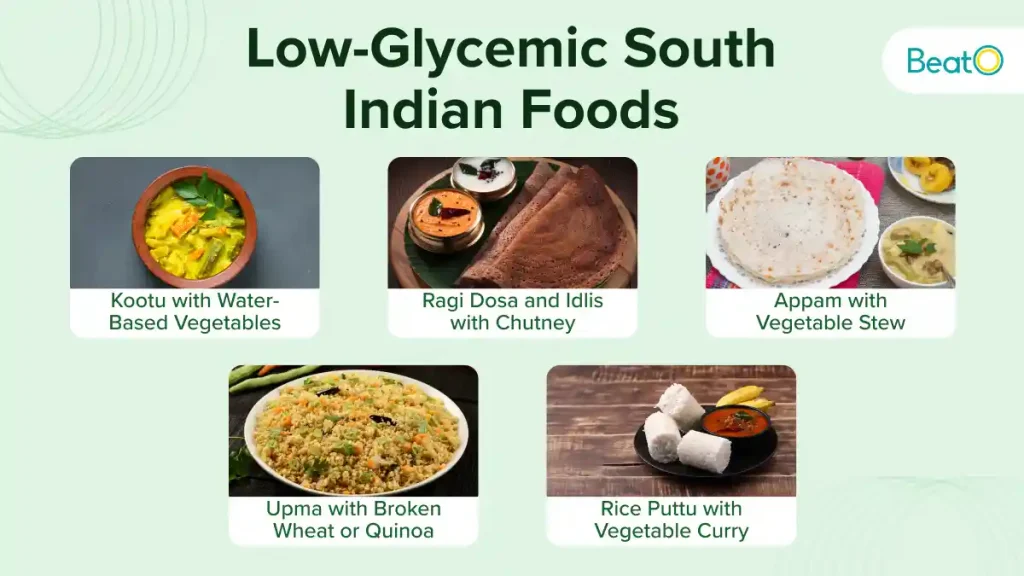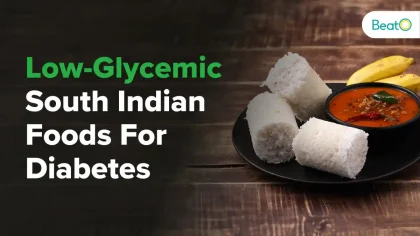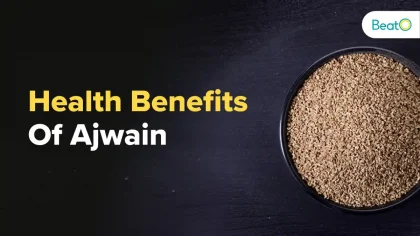Managing diabetes can be challenging, but the right diet can make it easier. This article will explore the top 10 low-glycemic South Indian foods to manage diabetes. These foods are beneficial for controlling the level of sugar in the blood, and at the same time, they are tasty and healthy. A great number of low-GI dishes are available on the South Indian food list for diabetic patients. With smoothies, breakfasts, desserts, and snacks, you’ll find delicious foods that are also nourishing for your body. It doesn’t matter whether you love dosas, idlis or vegetable stews; there are so many options to choose from. Savour South Indian food while making sure you do not indulge in foods that would take your blood sugar levels high with these options.

In this article, we’ll explore the top 10 low-glycemic South Indian foods to manage diabetes. These dishes are really tasty and healthy, and they also do not cause any harm to the blood sugar level, which is important for people, who are trying to fight diabetes by using the diet.
Here Are The Top 10 Low-Glycemic South Indian Foods to Manage Diabetes

1. Ragi Dosa and Idlis with Chutney
Ragi, or raggi or finger millet, is a nutritious cereal with a low glycemic index and is extremely beneficial for diabetics. Ragi dosa and idlis are a favourite breakfast meal in most parts of the region commonly referred to as South India. These are fermented foods that are easily digested in the body and release glucose in the bloodstream gradually, therefore preventing high sugar levels. Starchy foods are served with coconut or tomato chutneys, which complement their taste and provide other nutrients without raising the glycemic index.
2. Rice Puttu with Vegetable Curry
Rice puttu is a conventional food item in these states and is made from rice flour that is steam-cooked. By making some modifications, for instance, adding vegetables to the mix, it becomes more diabetic-friendly. It also has plenty of fibre, which is useful in managing blood sugar levels. Serving it with a vegetable curry makes it even healthier, by including a complete complement of carbohydrates, proteins and fibres.
Also read: Discover The Top 10 Vegan Curry Recipes
3. Appam with Vegetable Stew
Appam is a type of pancake made out of fermented rice batter It is a traditional dish from the southern region of India. It is a low-density food, it is beaten, and it is categorised under low-GI foods that can be taken by diabetics. Together with vegetables such as carrots and tomatoes in a stew, it forms a balanced diet, which not only satisfies hunger but is rich in nutrients. The stew contains a blend of vegetables and thus contributes to the fibre intake and assists in the management of blood sugar levels.
4. Upma with Broken Wheat or Quinoa
Upma is a dish that can be made from any grain of choice, which makes it diverse. If you want to have a low glycemic product, replace semolina with broken wheat or quinoa. These grains have a low glycemic index and contain fibre, which is practical for the management of blood sugar levels. Mixing carrots, peas, or beans, for example, makes it much healthier and tasty for breakfast or any meal of the day. Upma is a great addition to the top 10 low-glycemic South Indian foods to manage diabetes, offering both versatility and nutrition.
5. Brown Rice Pongal
Pongal is also one of the special South Indian food preparations made with rice and lentils. Substituting brown rice for the white rice decreases the glycemic index of the dish. Brown rice has layers of bran and germ that are not removed during the milling process, and this makes it richer in fibre and nutrients. This makes it a healthier option for diabetics because they can still take their normal amount of sweet foods without fear of a spike in their blood sugar levels. The protein from the lentils assists in controlling the levels of blood sugar for people with diabetes.
Also Read: Plank Exercise Benefits, The Power of Planking
6. Kootu with Water-Based Vegetables
Kootu is a typical preparation in South India where lentils are cooked with vegetables. Substituting water-based vegetables such as spinach, zucchini, and tomatoes helps reduce the glycemic index of the dish. These vegetables are also very light in calories and contain high fibre, which is very helpful in diabetes. The addition of lentils to the kootu makes the dish protein-rich and, thus, a healthy meal to be eaten.
7. Vegetable Poriyal
Poriyal is a quick stir-fry vegetable preparation that is common in the South Indian region. A low glycemic index is ensured by vegetables such as carrots, beans, and cabbage used in its preparation. These vegetables are good sources of fibre and other vitamins that are particularly beneficial in regulating blood sugar. It also enhances the exotic taste with the inclusion of mustard seeds and curry leaves, which are also rich in antioxidants.
8. Curd Rice with Added Nuts or Seeds
Rice with curd is popular among South Indians as it gives a soothing effect to their tummies. Substituting brown rice and incorporating nuts or seeds such as almonds and flaxseeds makes it more suitable for people with diabetes. Curd is rich in probiotics that are good for the gut, and the nuts and seeds provide essential fats and proteins for balanced blood sugar. This combination is an excellent choice among the top 10 low-glycemic South Indian foods to manage diabetes, offering both comfort and nutritional benefits.
Also Read: Yoga for Diabetes: Best Asanas/Poses With Steps For You
9. Chapatis with Dal and Vegetable Salad
The chapatis are made from whole-wheat flour, which is rich in complex carbohydrates and fibre. It is very healthy when taken with dal and a vegetable salad, and its glycemic index is low. The lentils are a good source of proteins and fibres that help manage blood glucose levels. The vegetable salad contributes vitamins and minerals to the foods, thus improving the nutritional value of the meal.
10. Steamed Snacks like Adai and Kozhukattai
Adai, a lentil pancake, and kozhukattai, a rice flour-based steamed dumpling, are good snack items for a diabetic patient. These steamed snacks do not lose their nutrients and are preferred foods with a low glycemic index. Adai is highly nutritious because it contains protein and fibre, while kozhukattai, when filled with vegetable or lentil mixtures, is equally nutritious.
Conclusion
Incorporating the top 10 low-glycemic South Indian foods to manage diabetes into your daily diet can make a significant difference in maintaining stable blood sugar levels. It is possible to savour the taste of South Indian dishes and, at the same time, keep off all the unhealthy meals and goodies. Right from ragi dosas and vegetable stews, the foods are a blend of great taste and nutritive value, which makes the management of diabetes less of a chore. Thus, by opting for these low glycemic foods, you not only contribute to your ability to control your blood sugar levels but also make the right choice for a healthier life. Yet it is important to consider that diabetes does not have to mean avoiding your favourite foods. With these top 10 low-glycemic South Indian foods to manage diabetes, you can savour every meal while keeping your diabetes in check.
Disclaimer: The content of this article is compiled information from generic and public sources. It is in no way a substitute, suggestion, or advice for a qualified medical opinion. Always consult a specialist or your own doctor for more information. BeatoApp does not claim responsibility for this information.
Best glucometer sugar testing strips are just one step away from your reach. Try out Doctors’ approved smart glucometer kit and monitor your blood sugar now.




